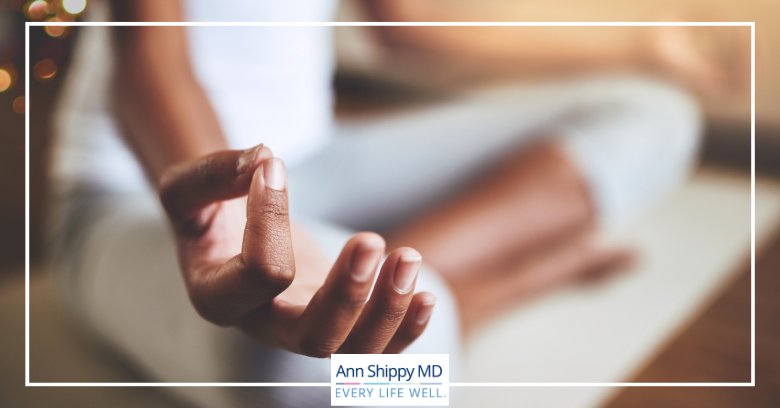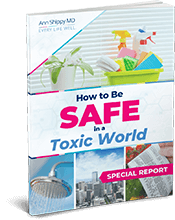Blue Light Phototoxicity and Blue Light Blocking Glasses
Has your screen use gone way up with the pandemic as you have meetings via Zoom or help your kids with distance learning? Are you back and forth between your phone and computer all day, read on a tablet and then settle down in front of the TV at night? Many of us, including our kids, are spending the majority of the day in front of one screen or another.
If you are experiencing tired eyes, dry eyes, headaches, fatigue and disrupted sleep in increasing amounts, overexposure to blue light, especially from screens, may be to blame. While reducing screen time certainly helps, there may be additional solutions to consider. Blue light blocking glasses might be part of the solution to help alleviate some of these symptoms. r.
Are blue light blocking glasses just a wellness trend? Or, is there some science to this popular bio – hack? That’s exactly what we are going to dive into today.
Keep reading to learn more about:
- The definition of blue light
- The negative health consequences of much blue light exposure
- The possible benefits (with little risk!) to blue light blocking glasses
- Additional action steps to help improve your relationship with blue light that improves the circadian rhythm and sleep
Let’s get started!
What Is Blue Light?
Blue light is a type of light in the visible spectrum. Technically, it’s referred to as short wavelength (400-500 nm) electromagnetic radiation. Blue light naturally comes from the sun and we are also exposed to blue light from artificial sources including, LED lights, fluorescent lights and other light sources. Backlit displays from computers, tablets, smart phones and other devices are particularly rich in blue light.
Natural blue light is at its peak mid-day when the sun is at its highest point in the sky and at the lowest in the evening when blue light scatters and the warmer orange and red hues are more prevalent. Blue light also reflects off the moon, so the amount of blue light from the night sky varies with the lunar cycle.
Humans, and all creatures, have evolved with the natural rhythms of light, daily, monthly and seasonally. The changes in physiology that we experience within a 24 hour period is called the circadian rhythm. A healthy circadian rhythm is dependent upon wakefulness and alertness during the light of day, drowsiness as blue light dissipates in the evening and sleeping in the dark of night.
Health Impacts Of Overexposure To Blue Light
Blue light sounds pretty great so you might be wondering what the concern is?
While natural blue light exposure from sunlight is beneficial for establishing the circadian rhythm, normal night vision, hormonal balance, neurotransmitter production and other positive health impacts, over exposure to artificial blue light is considered phototoxic.
Overexposure to artificial light, especially the excessive blue light from screens and devices may disrupt the circadian rhythm and impact sleep, both of which lead to symptoms and disease.
This excessive and toxic exposure to blue light may contribute to sleep loss and sleep disorders that affect health, longevity and quality of life. Fifty to 70 million Americans have disruption in their sleep/wake cycle that leads to less than seven to eight hours of sleep at night.
Short – term consequences of sleep loss include fatigue and sleepiness during the day, along with changes to memory, mood and appetite. In the short-term the body is resilient, but when sleep disruption is chronic, there are health consequences, including:
- Hypertension (high blood pressure)
- Metabolic syndrome and diabetes
- Obesity
- Depression (link to article on depression)
- Heart disease
- Accelerated aging
Beyond the health impact of changes in sleep patterns and sleep loss, excess blue light in the evening, negatively impacts the circadian rhythm and associated hormones. For example, melatonin is the hormone that naturally rises in the evening and causes the drowsiness that promotes sleep. Interestingly, melatonin production is inhibited by blue light (and green light also). This makes sense because we don’t want the body to produce melatonin during the light of day. But, when we use blue light devices at night, the suppression of melatonin continues when what we actually need is for the levels to rise.
Research on the eye itself shows that long exposure to blue light not only causes fatigue in the eyes (this is a common complaint of working at a computer), but the blue light may even damage the eye itself by increasing oxidative stress and compromising the structure of the eye. Dry eye, cataract, age-related macular degeneration, nearsightedness and ocular injury may all have a component related to blue light exposure.
In previous articles we’ve talked extensively about the gut microbiome, but interestingly the eye has a microbiome of its own as well. Health of the ocular microbiome impacts the health of the eye and risk for developing eye infections and disease. So while blue light plays a significant role in our modern environment, a nutrient-dense diet high in antioxidants, regular exercise and a healthy microbiome are foundational for ocular health also.
Blue Light Blocking Glasses
Are blue light blocking glasses a solution to toxic blue light?
In a clinical trial of five different commercially available blue light blocking glasses, researchers found that the glasses partially filter short wavelengths of light and protect the retina of the eye from potential blue light hazards when compared to placebo. Blue light blocking glasses must balance the light blocking effects with also allowing for visual performance, so while glasses reduce blue light they don’t eliminate it all.
In this study, blue light blocking glasses reduced phototoxicity by 11 to 23 percent and decreased melatonin suppression by 6 to 15 percent. One third of wearers found anti-glare benefits and improved vision for computer use.
In general, many benefits are reported from blue light blocking glasses, including these that you might notice with regular use:
- Decreased headaches
- Decreased eye strain
- Increased energy
- Improved mood
- Better sleep – and all the health benefits associated with improved sleeping patterns including reduced stress, improved memory and reduced chronic disease risk
The best part about blue light blocking glasses is that it is a relatively inexpensive intervention with virtually no risks or negative side effects!
How To Have A Healthy Relationship With Blue Light
Let’s cover some easy-to-implement action steps for supporting your natural circadian rhythm and sleep cycle by adjusting your light exposure throughout the day.
1 Prioritize natural light. Natural light exposure during the day helps to regulate the circadian rhythm and keep you awake and alert when you need it most. In the morning, get outside for 15 to 20 minutes of sunlight. In addition, open the curtains and allow for natural light exposure during the day when the sun is up in the sky.
2. Dim the lights at night. Full spectrum indoor lighting makes sense during the day, but at night the orange/red hues help to simulate the natural light changes with sunset. After dark, turn off the overhead lights if possible. Instead, opt for side lamps, install dimmers on your light switches or even install evening lighting using amber light bulbs. (Dr. Shippy’s Team, if you’d like to add an Amazon affiliate link, something like a Himalayan salt lamp might work here.) Great Idea – I will also add this link to the Truelight bulbs (Susan) https://truedark.com/product/luna-red-sunset-bulb/
3. Minimize electronics at night. The truth is that most of us are all too connected to our devices and taking a break in the evening for non-screen related activities has far reaching benefits. Simple swaps here include reading a physical book instead of a tablet or playing games and socializing with family instead of watching television, for example. You may even want to reset your habits with a digital detox. If you are on a screen, adjust the color to a nighttime setting or, ideally, wear blue light blocking glasses. (add link to True Dark)
4. Try TrueDark. TrueDark glasses are Dr. Shippy-approved blue light blocking options. Try the Daylights, which are clear or yellow lenses designed for daytime computer use and the Twilights which are an orange/amber colored lens designed to block artificial blue light after dark and improve sleep.
Even in our modern world, it is possible to mimic and celebrate the natural cycles and rhythms of nature that the body needs to thrive. This is as simple as allowing for natural sunlight exposure during the day and reducing artificial blue light, especially after dark. Some may call it biohacking, but it is really just common sense supported by science.
Additional devices that may be helpful:
References
- https://www.ncbi.nlm.nih.gov/pmc/articles/PMC5207664/
- http://photobiology.info/Roberts-CR.html#TOP
- https://www.ncbi.nlm.nih.gov/books/NBK19961/
- https://pubmed.ncbi.nlm.nih.gov/11487664/
- https://pubmed.ncbi.nlm.nih.gov/1896724/
- https://www.ncbi.nlm.nih.gov/pmc/articles/PMC5045141/
- https://www.ncbi.nlm.nih.gov/pmc/articles/PMC6288536/
- https://www.ncbi.nlm.nih.gov/pmc/articles/PMC5207664/













